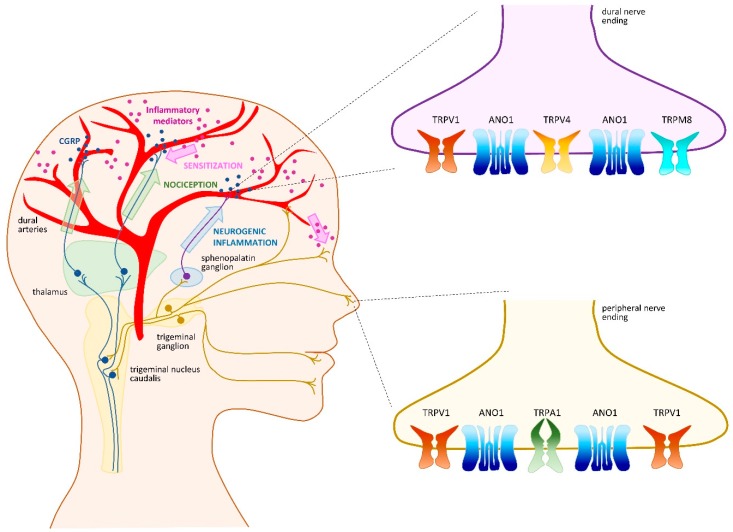Figure 2.
Transient receptor potential (TRP) channels in the trigeminovascular system and migraine development. Migraine triggering events remain unknown and may be a central or peripheral process. The precise order of events contributing to migraine pain is also debated. It is generally admitted that activation and sensitization of primary afferent nociceptors that innervate the dural and meningeal vasculature trigger both calcitonin gene-related peptide (CGRP)-induced vasodilatation and neurogenic inflammation. Pain signals pass through the trigeminal nucleus caudalis, which relays signals to higher order neurons in the thalamus and cortex (green arrows). A trigemino–parasympathetic or trigeminal autonomic reflex arc passes through the sphenopalatine ganglion and is responsible for migraine pain by mediating neurogenic inflammation (blue arrow). Central and peripheral sensitization (pink arrows) may contribute to maintenance of pain signals and predispose to future migraine attacks. Transient receptor potential (TRP) vanilloid 1 (TRPV1) and anoctamin 1 (ANO1) might be involved in initiation, nociception, and sensitization processes of migraine. TRP ankyrin 1 (TRPA1) might be more relevant in the initiation phase. There are few studies available on TRPV4 and TRP melastatin 8 (TRPM8), yet these receptors might be important in pain signal transmission or neurogenic inflammation.

